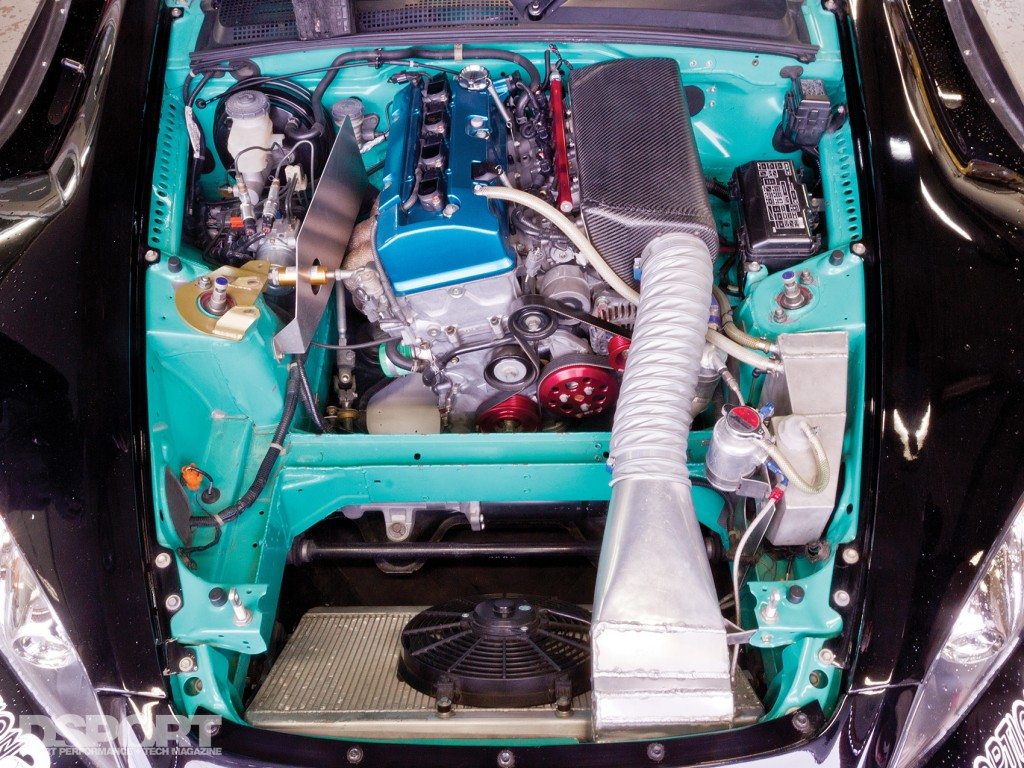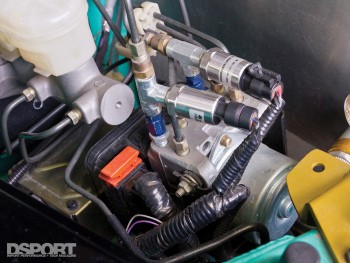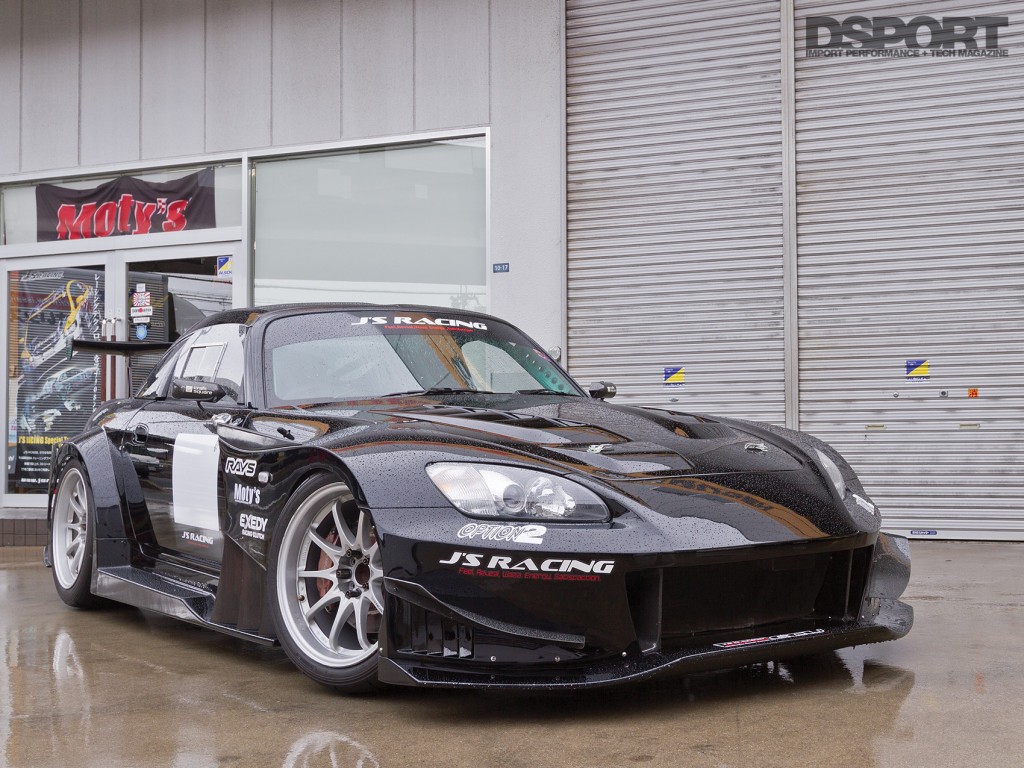TO DA Max
Time attack rules tend to be less stringent on modifications that can be employed, including engine upgrades. When it comes to road racing, horsepower certainly makes an impact on lap times in the straights. But bottom end torque to power out of the turns is also important.
J’s Racing elected to stay close to its naturally aspirated, endurance racing roots by going with a displacement increase instead. The engine’s displacement was bumped from 2.0-liters to 2.4-liters by way of a 100mm TODA Racing stroker crankshaft. The bores remained 87mm, with high-compression 13.0-to-1 TODA Racing pistons and connecting rods joining the crank. To complete the longblock assembly, the cylinder head received a set of TODA valve springs and retainers before the J’s Racing head studs clamped the head to the block. TODA camshafts lift the valves higher and for a longer duration to optimize airflow in and out of the cylinders.
Individually Optimized
Equalized distribution of air to each cylinder is important, as the engine would not function efficiently if one cylinder were handicapped due to a lack of intake air volume. A popular alternative to the single throttle body and plenum is individual throttle bodies. J’s Racing incorporated TODA individual throttle bodies to regulate the incoming airflow to the intake ports. Cool, pressurized intake air is delivered to the throttle bodies thanks to a carbon-fiber plenum that receives ambient air from a ram air duct at the front of the bumper opening.
Adding twenty percent more displacement while improving volumetric efficiency warranted refinement of the fuel and ignition tables. A MoTeC M400 engine management system takes command of the injectors and the coils while also logging data channels and ancillary sensors. Once the M400 had been calibrated for the enlarged F20C engine, the S2000 enjoyed a bump in output to 335 horsepower and 231 lb-ft torque to the hubs of a Dynapack dynamometer.
Knowledge Based
In any form of racing, datalogging has proven vital, serving a key role in diagnostics and tuning. This information helps the team refine the racecar setup, which in turn lends to reducing lap times, increasing reliability, winning races and setting records. The S2000 has sensors monitoring a variety of functions, including steering angle and brake bias.
Back on Track
Retasked for time attack, the S2000 was ready to return to the track to turn laps. With J’s Racing’s founder Umemoto behind the wheel, the S2000 laid rubber down on Suzuka Circuit’s racing surface. After running the 3.6-mile, 17-turn Grand Prix course, the team recorded a best lap time of 2’19.257. But this S2000 should still be able to shave more time from the clock, according to Murakami, as it’s still carrying some unnecessary weight. The chassis reinforcement that was added for Option2 Taikyu competition added essential strength to the AP1. For time attack, however, much of this was overkill and not necessary. Future plans therefore include a weight reduction, which Murakami anticipates should be on the order of around 220 pounds. Once the weight has been lost, Umemoto and the S2000 will return to Suzuka to pursue the C3S (mid size, front engine, RWD, semi-slick tires) class record.





